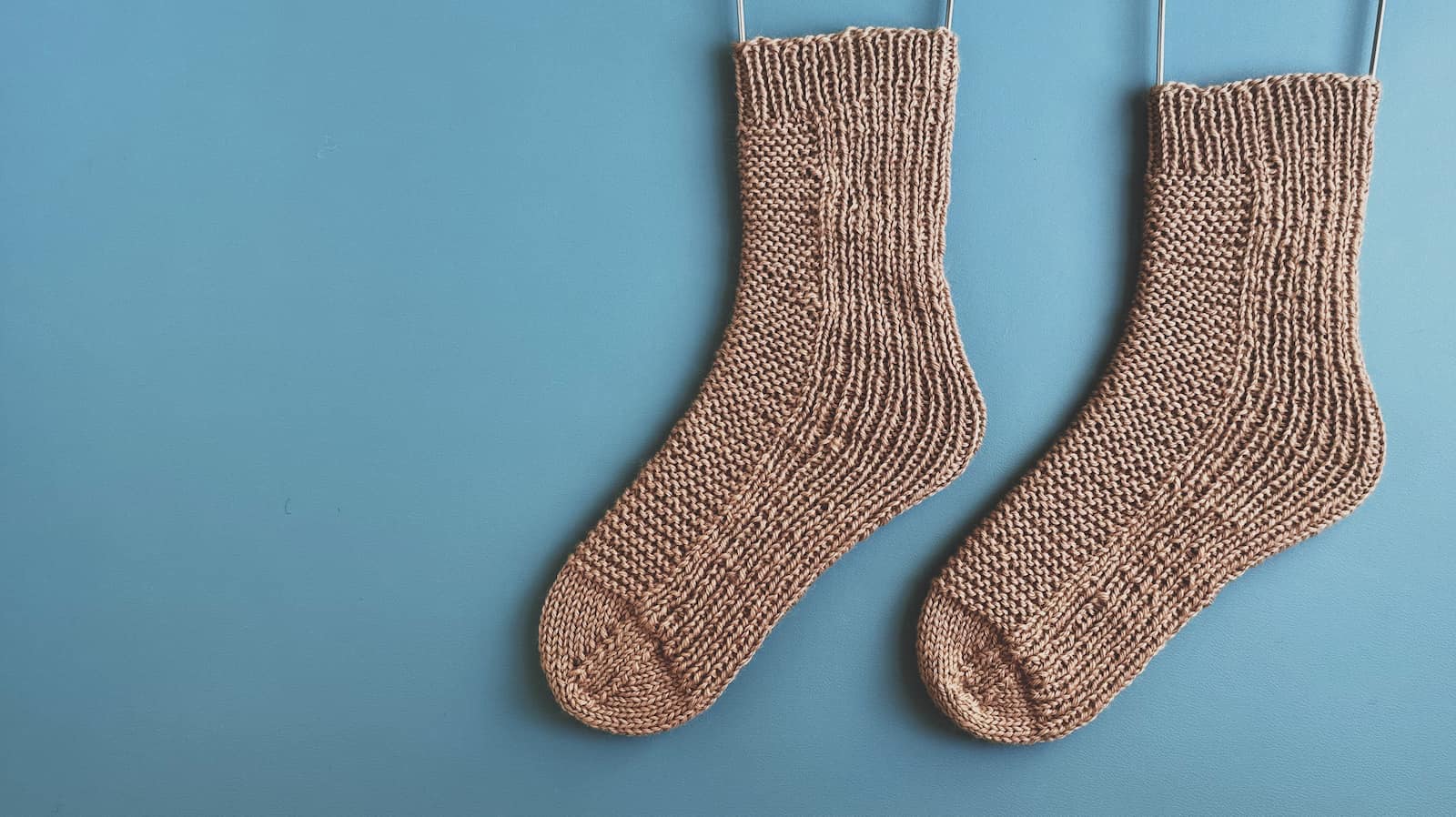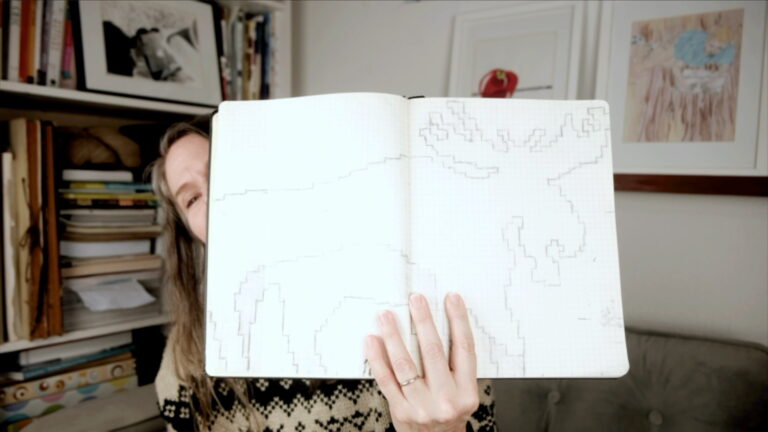These Are the Fastest Socks
These are the fastest socks. As in, my knitting them quickly, not my wearing them to run fast. You know what I mean. The Simply Irresistible Socks- Worsted flew off my needles and onto a Youtube mini video in a week because I felt like knitters needed to know about these quick socks. They were the fastest knitted socks I’ve ever made and have opened new Christmas gift-giving doors for me.
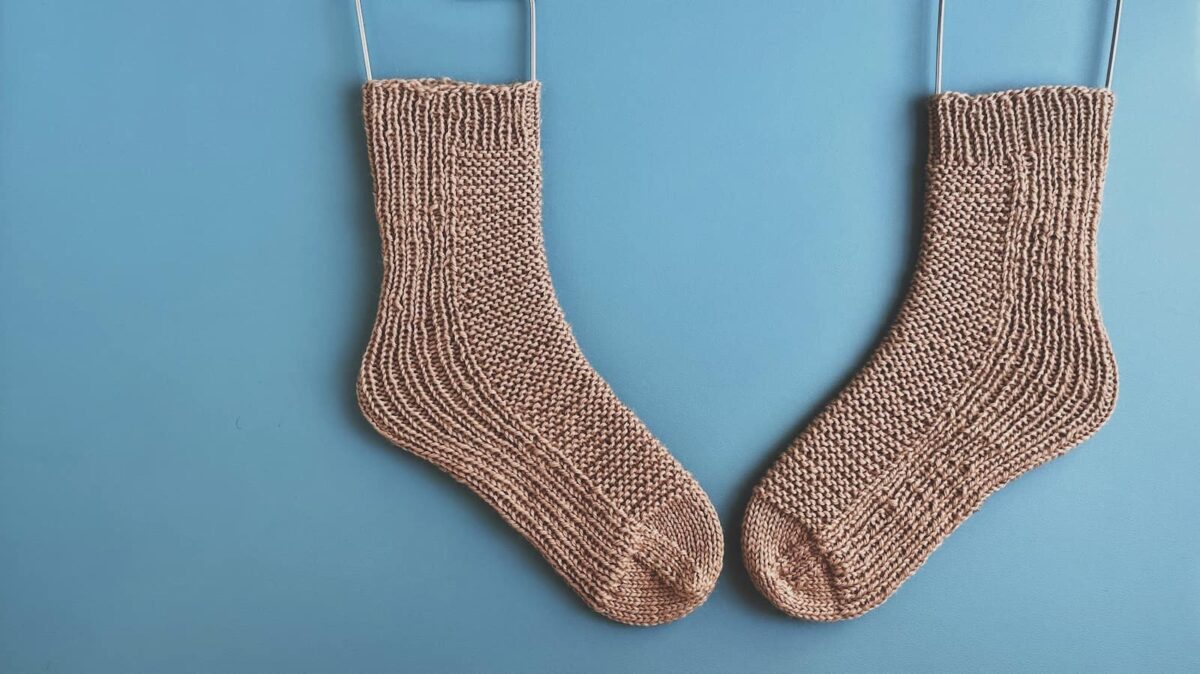
What Makes This Sock Design So Speedy?
The whole worsted-weight yarn thing is probably the main reason for all the “sock flying,” but these Simply Irresistible socks, and this design in particular, have some features that make them extra easy to knit.
Worsted Weight Works Wonders (Ugh, I know)
I used two balls of affordable worsted-weight wool that I happened to have in the closet. I found them at a thrift store for a couple of bucks. Guess that makes these my cheapest pair of hand-knit socks, too.

I chose Wool of the Andes Superwash, hoping they would wear well after much use. Another knitter in our knit-along used an acrylic, no-pill yarn and felt confident that it would hold up to all of those cozy winter days.
I remember my Grandmommy’s gift house shoes received a lot of abuse from the kids in the family, yet I don’t remember wearing a hole in them before outgrowing them. Maybe that’s a good indication that acrylic will be tough enough for good house socks.
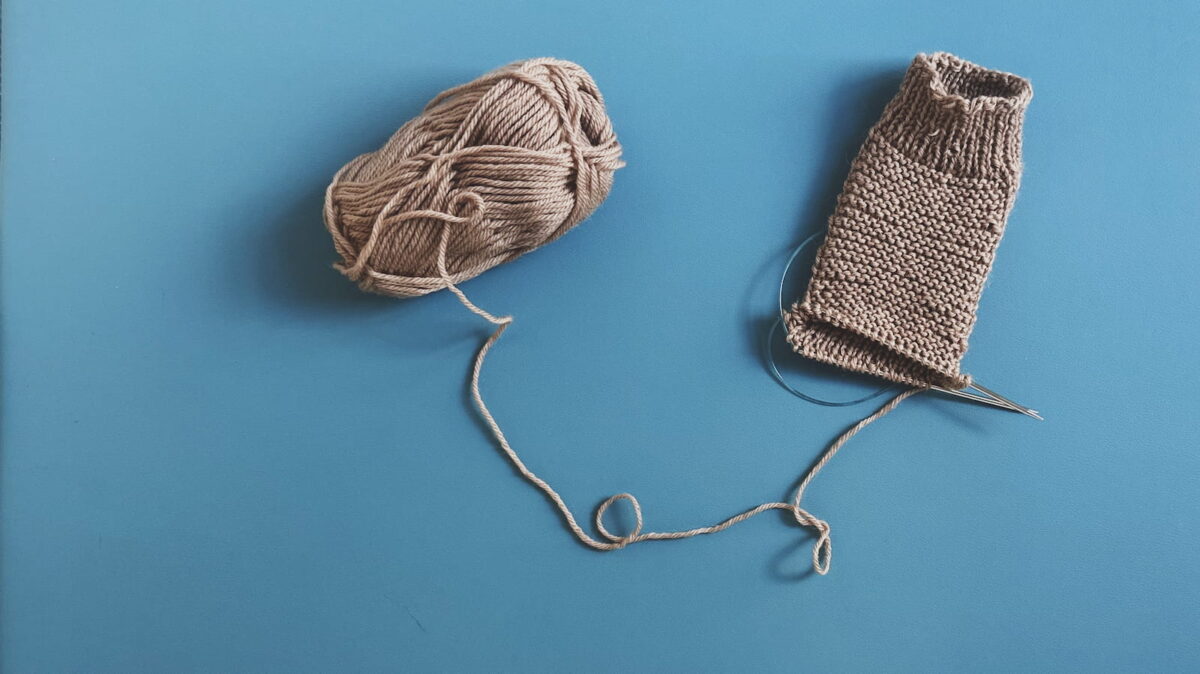
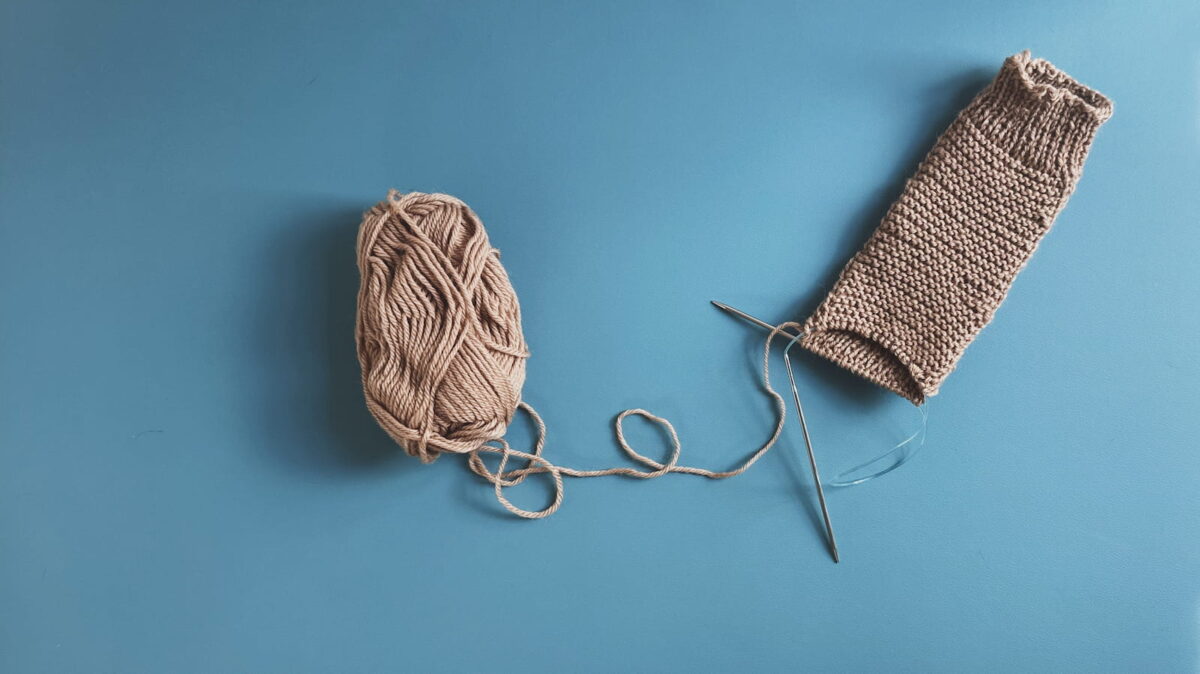
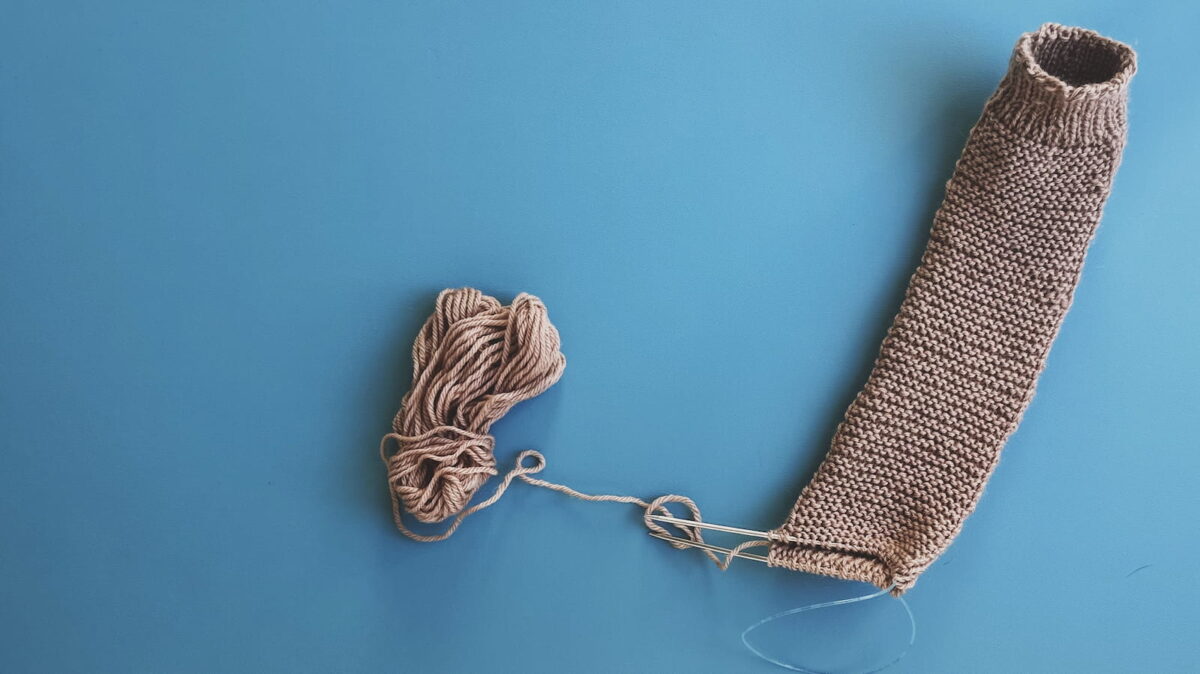

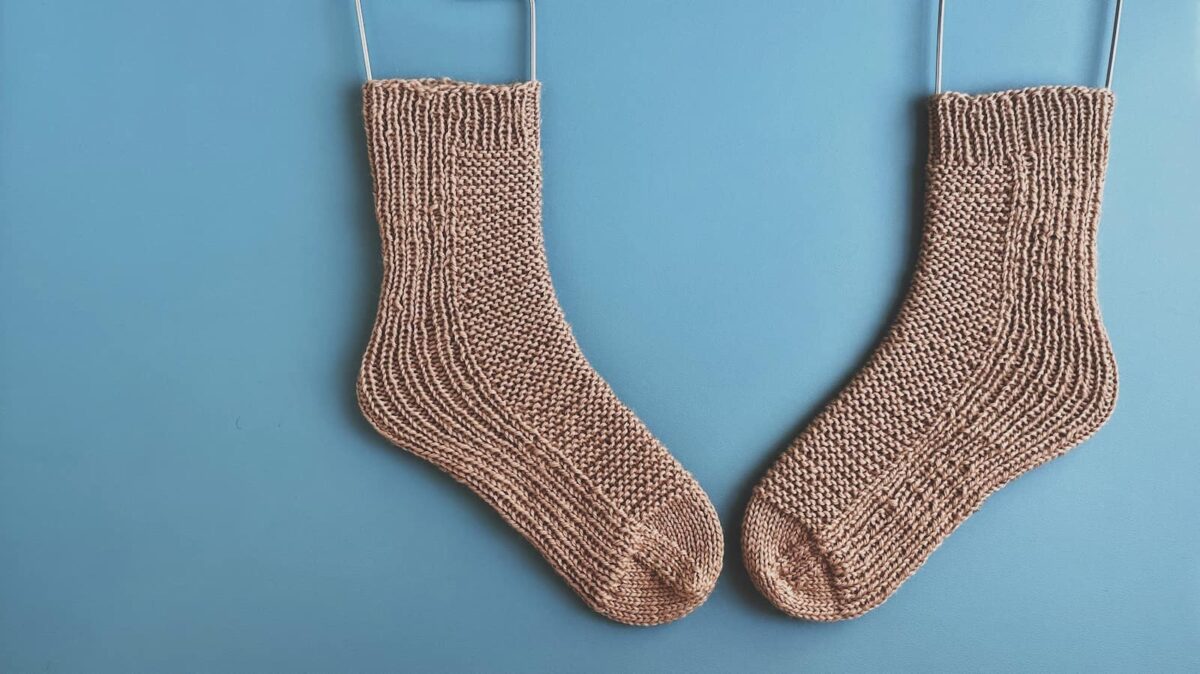
The Secret to Speed Is In the Design
Christie’s Simply Irresistible collection is designed without a traditional heel, so the usual knit-a-bit-stop-to-measure-then-repeat process has been eliminated. There are also no short rows or gusset stitch counts to keep track of. The ribbing, which makes up most of the sock, expands to fit around the heel and then contracts around the leg.
Christie uses a stitch pattern that creates a bit more shaping than a tube sock, to better fit the contours of the foot. The only thing to worry about is remembering the stitch pattern (it’s easy) and choosing the right number of stitches to cast on.
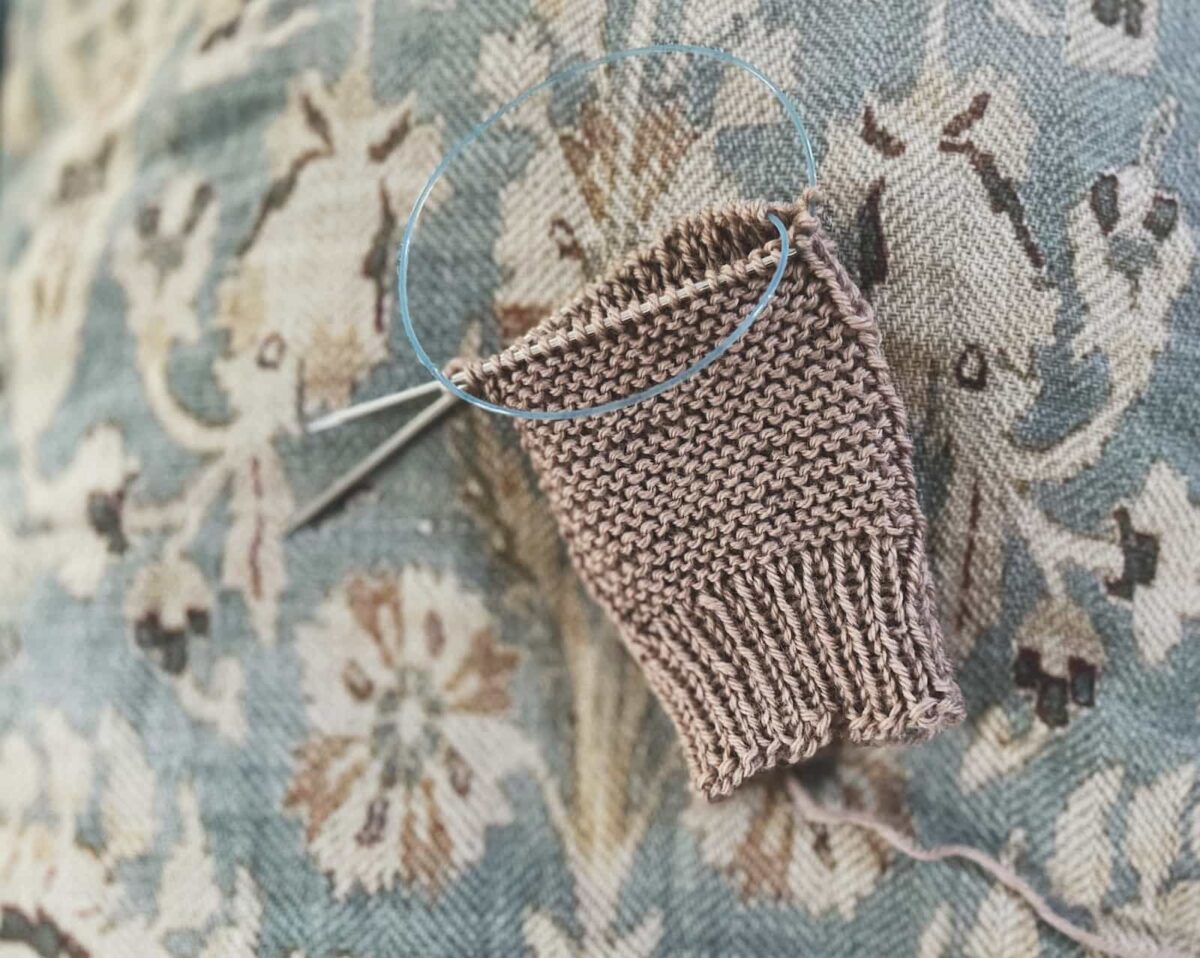
Sizing Made Easy
With the challenge of shaping a heel and gusset taken out of the equation, all that’s left is ensuring you choose a size that will comfortably fit the circumference of the foot. I chose a medium, though I think I could also wear a small. The nature of ribbing makes this process more forgiving than a traditional hand-knit sock would be.

If you’re knitting for someone else, you can just quickly measure around their instep but I don’t think that’s necessary. Just ask them for their shoe size. Thanks to Knitty, I know that foot circumference is usually 95% of the foot length.
Simply plug your recipient’s shoe size into a foot/ shoe size conversion chart to find the corresponding foot length. Take that number and multiply it by 0.95 and, Voila!, that is the foot circumference.
I just did all the math for you. You’re welcome. I chose to knit a size medium in these and they fit fine, but I do think I could’ve knit a small and probably been fine.
A Pattern that Works With What You Have
One big bonus of a pattern with such forgiving sizing is that it lets you use the yarns you already have in your stash. You can combine yarn strands to fit the needs of a heavier weight pattern, like you probably already do:
- 2 strands laceweight = fingering
- 1 laceweight +1 fingering = sport or DK
- 1 laceweight + sport or DK = worsted
I have found, however, that the ribbed nature of heel might allow me to combine laceweight with a fingering weight yarn and STILL knit a fingering weight pattern and maybe even the worsted weight. If I felt unsure, I could always knit the next size up, gaining a few extra stitches in my cast on round.

Another option would be to eliminate a few stitches if you thought your gauge was off-kilter, as long as you maintain the proportions or ribbing to stitch pattern along the top of the foot. This is all very cavalier, I know, but fun, inventive projects do that to me. I think the ribbing compensates for the discrepancy in yarn weights.
I am known for guestimating and fiddling until I get things the way I want, but I do think I could find a way to make any of her sock designs work with whatever yarn I have. Basically, I find this an answer to what to do with some of the stash.
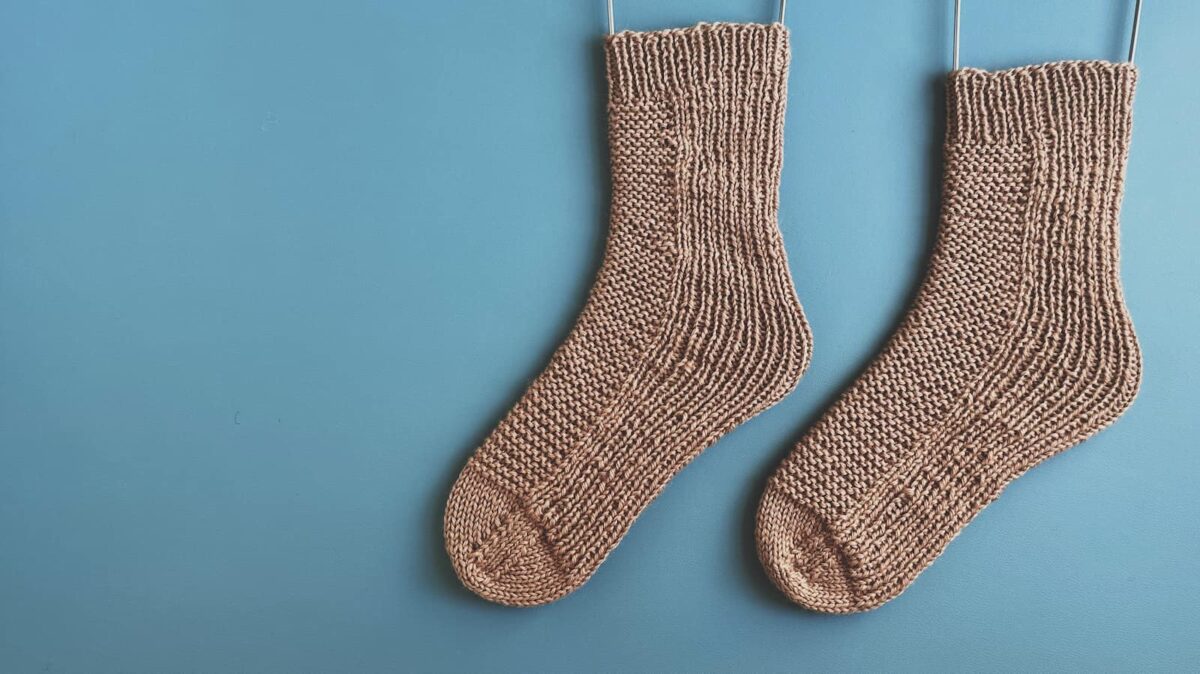
My Future Heel-less Sock Plans
My current knit from Christie’s designs is the Thistle Seeds fingering weight pattern. I wasn’t sure how it would work with a variegated skein of Passion Knits Twinkle Toes, but it is looking incredible. I’ll write a post just for it and for the Mohair pair I’ve already knit.
As for Christmas sock knitting, I will probably be putting my sizing bravado to the test in the coming months as I work on some socks for family and friends. If I fall on my face, due to this laxity in following instructions, by creating an abomination, you’ll be the first to know.
By abomination, I don’t mean substituting oversized versions of this pattern for Christmas stockings
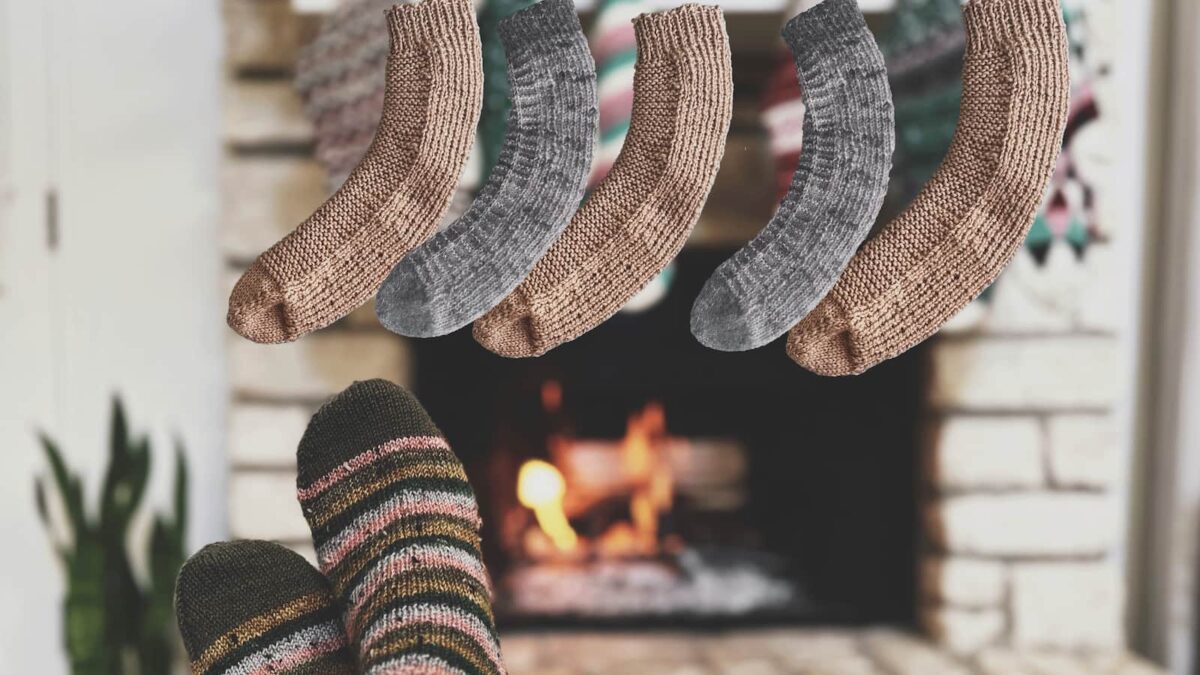
But since they are a quick knit, ripping back a sock shouldn’t throw my knitting “schedule” off. This flexibility and speed is the reason I made a video about these and am posting my worsted sock details here. Too many of us search for a good, last-minute handmade gift and could use a pattern like this.
If You Have Never Finished a Pair of Socks…
Then, there are those who just want to finish one measly pair of socks and might actually do it if the sock is worsted and quickly grows off of the needles. I think this is the sock pattern for you!
More on these in my mini video: Quickest Sock Pattern I’ve Ever Knit, in the Live Cast On Party with Christie, in Episodes 77: Trauma Trigger Knits, 78: Simply Extra, 79: Really It’s a Sock, and on my Ravelry as always!
